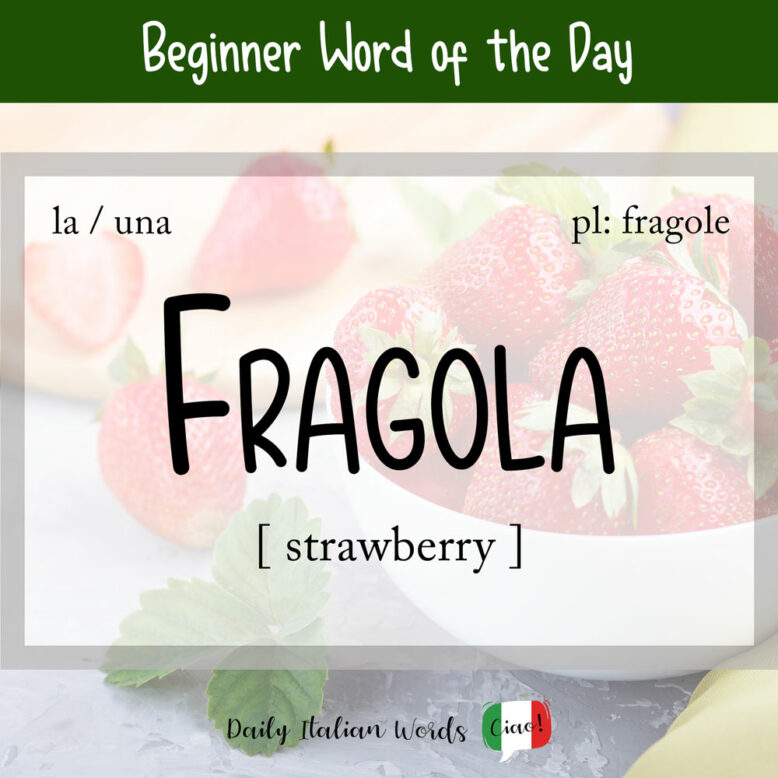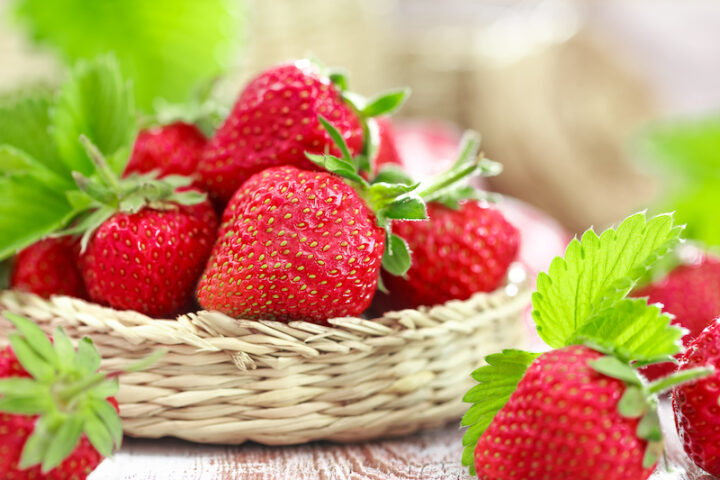Summer is the season for strawberries, which are known as fragole (feminine, singular: fragola) in Italian. Just as in English, the word refers to both the plant and the fruit it produces.

The common variety we buy from stores and markets tend to be grown in large strawberry fields (campi di fragole) by farmers and are much larger and juicier in comparison to their tiny cousins, the wild strawberries (fragole dei boschi).
Adoro mangiare le fragole con la panna!
I love eating strawberries and cream!
An activity my family used to enjoy as soon as June and July rolled around was strawberry picking (raccolta delle fragole), though I’m pretty sure that being the gluttonous child that I was, I ate more strawberries than I actually collected! 😉

Below are a few popular food products made out of strawberries:
- gelato alla fragola = strawberry ice cream
- torta di fragole = strawberry cake
- marmellata di fragole = strawberry jam
- yogurt alla fragola = strawberry yogurt
If you want to describe small strawberries, you can say piccole fragole (small strawberries) or use the diminutive fragoline.
Although not particularly common in everyday speech, fragola (or color fragola) can also work as an adjective to describe something that is a similar shade of red to a strawberry.
Si è messa un vestito (color) fragola per la festa.
She put on a strawberry coloured dress for the party.
Heather Broster is a graduate with honours in linguistics from the University of Western Ontario. She is an aspiring polyglot, proficient in English and Italian, as well as Japanese, Welsh, and French to varying degrees of fluency. Originally from Toronto, Heather has resided in various countries, notably Italy for a period of six years. Her primary focus lies in the fields of language acquisition, education, and bilingual instruction.


